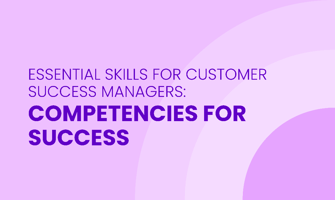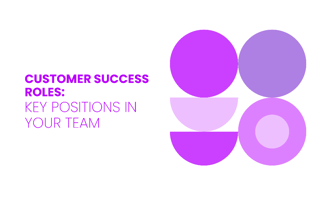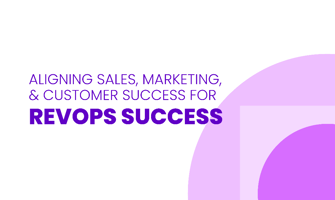To thrive as a Customer Success Manager (CSM), mastering a mix of skills is important. From empathy...
Customer Success Strategies: Effective Approaches for Enhancing Customer Experience
Creating a strong customer success strategy is important for any business wanting to keep customers happy and loyal.
This guide explores ways to improve customer experience:
Understand their journey.
Provide helpful onboarding.
Offer consistent support.
Use tools like CRM software.
When businesses focus on customer success, they build lasting relationships, boost revenue, and better understand customer needs.
Let's look at how these strategies can benefit your business and your customers.
Understanding Customer Success Strategies
To measure how well customer success strategies work, a company should track these key metrics:
Customer retention
Health scores
Engagement
Customer churn
Customer retention shows how long customers stay. Health scores and engagement highlight satisfaction levels. By monitoring these, businesses can predict churn and address it early.
Aligning customer success with business goals includes prioritizing:
Customer loyalty
Upselling
This requires good communication and teamwork within the company. Guided onboarding, proactive support, and collecting feedback can improve customer experience and satisfaction.
Companies should create content and training to educate customers about their products and services. SaaS businesses can automate parts of the strategy for efficiency. For example:
Thinkific for customer education
Custify for health scores
Well-defined touch points in the customer journey and a strong customer success strategy encourage expansions and upsells. This contributes to overall growth and loyalty.
Mapping the Customer Journey
Mapping the customer journey means identifying touchpoints and interactions from the first moment of awareness to after the purchase.
It includes these phases:
Reaching potential customers through brand content.
Using effective sales processes for acquisition.
Engaging with guided onboarding for a smooth start.
SaaS businesses use tools like Thinkific for customer education and Custify for tracking health scores and engagement.
Different personas have unique challenges:
New users may need extra training and support to see the product's value.
Older users might look for expansion opportunities or new features.
A customer success strategy includes:
Customer feedback
Health scores
Automated programs
These help to visualize and improve each stage.
Effective communication and continuous education ensure customer retention and loyalty by addressing needs and upselling or cross-selling opportunities.
The right tools and strategies create a seamless experience. This drives customer success and supports long-term business goals.
Importance of Customer Feedback
Customer feedback is important for business success.
Gathering and understanding feedback helps businesses know their customers' needs. It also helps them improve products and services.
For example:
Feedback from customer programs can show problems in onboarding.
This allows the team to improve the onboarding process.
Fixing these issues can reduce customer churn and increase retention.
Feedback is also useful for businesses using automation. Tools like Thinkific or Custify help gather customer insights.
These insights help businesses adjust strategies. This can lead to better health scores and increased loyalty.
By using feedback, businesses can improve education and training programs. This leads to higher customer satisfaction and more chances for upselling or cross-selling.
Good communication and support, based on feedback, help customers get the most value. This builds strong customer relationships and boosts revenue.
Optimizing Touch Points
Identifying important touch points that influence customer satisfaction means mapping out the entire customer journey.
Each touch point, from onboarding to support, needs attention.
Guided onboarding helps customers understand products from the start. This paves the way for early success. Using platforms like Custify can automate this process.
To improve touch points, add personalized content and customer education programs. Tools like Thinkific support training and retention.
Strategies should include:
Proactive communication
Feedback collection
Ensuring customers find value at each stage
Measure performance using health scores and customer feedback. This helps evaluate engagement and satisfaction.
Tracking metrics like customer churn and loyalty helps businesses understand their touch points' effectiveness.
SaaS businesses benefit from structured methods and consistent training.
Customer success teams should build strong relationships. They should also enable upsell and cross-sell opportunities and address pain points quickly. This improves customer experience and increases revenue.
Later, companies can focus on expansion strategies to maintain customer loyalty and support long-term goals.
Effective Customer Support
A company can help its customer support team resolve issues well by doing a few things:
Provide guided onboarding and ongoing training. This aligns team members with the organization's goals.
Use resources like Thinkific for education and training. This clarifies roles and improves the customer experience.
Track important metrics like health scores. These measure customer engagement, satisfaction, and retention.
Use proactive communication and feedback loops. This helps understand customer needs and prevents churn.
Implement automation and methodologies, especially in SaaS businesses. This streamlines processes without losing touchpoints.
Include cross-sell and upsell opportunities in the support strategy. This fosters customer loyalty and drives revenue.
Focus on the customer journey. Maintain consistent and helpful interactions to enhance relationships and improve retention rates.
Use tools like Custify to monitor health and engagement. These ensure support teams provide value at every touchpoint.
These steps ultimately contribute to long-term customer success and business growth.
Enhancing Brand Awareness
To enhance brand awareness, companies can use several strategies:
Customer success programs.
Engaging content.
Effective communication.
Guided onboarding
These strategies help customers understand products and services better.
They also boost customer retention.
Businesses in any industry can benefit from a good customer success strategy. This includes education, feedback, training, and proactive support.
Using social media platforms is another good method. By sharing engaging content and customer success stories, businesses can reach more people. For example, SaaS businesses use platforms to educate and communicate with customers, improving their onboarding experience.
Tools like Thinkific or Custify can help too. They automate part of the customer experience while keeping a human touch.
Partnerships and collaborations are important as well. They can expand a brand's reach and create new opportunities for cross-sell and upsell.
By working with other organizations, a business can access new resources and customer bases. This increases brand loyalty and revenue. This approach helps build strong relationships and achieve long-term success. It also reduces customer churn.
Structured Product/Service Education
You can create an education program for products or services by understanding what customers need. Align these needs with your business goals. Here are some strategies:
Use automation tools like Custify to deliver content and measure engagement.
SaaS businesses use Thinkific to set up educational content for smooth onboarding.
Guided onboarding helps customers realize value early, which reduces churn.
Keep communication clear and collect regular feedback to tailor the program.
Segment customers and use health scores to measure satisfaction. Adjust training based on these insights. Support customers with webinars, tutorials, and FAQs to ensure success. Measure the program's success through metrics like customer retention and revenue growth.
Monitor touch points in the customer journey to find areas for improvement. Integrate training into the customer success strategy to enhance experience. This promotes upsell and cross-sell opportunities and builds long-term relationships.
Make sure the program is dynamic. Incorporate customer support and feedback to keep customers engaged and loyal. This approach drives success for your organization.
Guided Onboarding Process
A company helps new customers by breaking its onboarding process into clear steps. This makes sure customers understand and use the products or services well.
The company begins with a kick-off meeting. During this meeting, the customer success team explains the strategy, goals, and training plan.
Thinkific provides educational content to help new customers get started.
Continuous support is offered through custify.
They monitor important milestones like product setup, first use, and achieving initial value using health scores.
Communication is important. They check in regularly, send emails, and ask for feedback. These actions help customers share their experiences and ask for help.
Automated tools like Later remind customers about upcoming training sessions.
The team uses these interactions to keep customers engaged. This aims to increase customer retention and loyalty. Feedback channels help gather insights to refine the onboarding process, supporting both customer and business growth.
This method helps saas businesses reduce churn and improve customer health. It also opens opportunities for upsell and cross-sell, enhancing the overall customer experience and encouraging long-term success.
Realizing Customer Value
To meet changing customer needs, the organization focuses on guided onboarding and ongoing support.
They use tools like Thinkific and Custify.
Health scores and engagement metrics help measure success and find key value points.
Customer feedback is important in their strategy.
For example, SaaS companies gather feedback from various channels. They use this to create training programs and content to improve customer experience and retention.
Communication and education are important. The team conducts webinars and uses automation for consistent support.
Metrics like customer retention rates, churn rates, and loyalty scores help them track success and make adjustments.
Building strong relationships through proactive engagement and upsell or cross-sell opportunities strengthens the brand and boosts revenue.
This approach ensures customers reach their goals, leading to mutual success and loyalty.
Reducing Customer Churn
To reduce customer churn, a business can do a few things.
1.Implement customer success strategies like:
Guided onboarding
Customer support
Training programs
2. Communicate personally with customers through various touchpoints to retain them.
For instance, guided onboarding in the first 90 days helps customers understand the product. This leads to better engagement and reduces early churn.
Use tools like Thinkific and Custify in SaaS businesses. These tools automate support and education to show customers early value.
Apply data analytics to:
Map the customer journey
Monitor health scores
Segment customers for tailored communication and proactive engagement
5.Integrate feedback loops and customer service methods to:
Fine-tune services and products
Foster long-term customer loyalty and reduce churn.
Understanding customer behavior through these methods helps predict problems early. This allows the team to address them before they lead to churn.
Additionally, building strong customer relationships and increasing customer success can create upsell and cross-sell opportunities. This drives revenue and expansion.
A good customer success strategy includes:
Personalized programs
Proactive support
Continuous training
These directly contribute to higher customer retention and reduced churn in any industry.
Building Customer Loyalty
An organization can create positive interactions with customers. This fosters lasting relationships by using a strong customer success strategy.
Here are some steps for a well-defined customer journey:
Guided onboarding
Customer training
Support services
Understanding customer feedback
Personalized communication helps build trust and engagement. Businesses can track customer interactions and tailor content using CRM systems like Custify. They can also use loyalty programs or reward systems to boost customer retention and satisfaction.
Offering value through education, support, and automated touchpoints makes customers feel valued. For example, SaaS businesses use automated health scores and proactive support to improve customer engagement and reduce churn.
Expansion Offers and Upselling
Companies find upselling and expansion opportunities by monitoring customer engagement, usage patterns, and feedback with tools like Custify.
They use health scores to see which customers might be ready for advanced products or services.
To communicate the value of these offers, they use personalized messages during touchpoints and guided onboarding. This allows the team to show extra features that meet customer needs.
Training programs like Thinkific can help customers understand how upgrades can improve their experience.
To measure success, organizations track metrics like customer retention, churn rates, and revenue growth. They also collect feedback through customer satisfaction surveys.
SaaS businesses, for example, benefit from ongoing communication and support. This helps customers see value in upsell offers.
By creating content and resources that show the benefits of extra services, companies can boost customer loyalty and drive business growth through upselling.
Forming a Robust Customer Success Team
To form a strong Customer Success Team, follow these steps:
1.Define roles such as:
Customer Success Managers
Onboarding specialists
Support representatives.
2.Focus team members on different parts of the customer journey:
Onboarding
Customer support
Ongoing engagement.
3.During recruitment:
Look for strong communication skills
Find people with problem-solving abilities
Choose those with a customer-centric mindset.
4.Ensure retention by:
Offering continuous training
Providing regular feedback
Creating growth opportunities within the company.
5.Use tools and technologies like:
CRM systems
Thinkific for customer education programs
Custify for health scores.
Automation tools help manage repetitive tasks, which lets the team focus on building relationships and providing value.
Guided onboarding helps customers understand products and services.
This leads to higher satisfaction and lower churn rates.
By implementing a customer success strategy, businesses can:
Enhance retention
Drive upsell and cross-sell opportunities
Improve overall revenue
Scaling Customer Success Operations
Salesforce: Customer Success Approach
![]()
Salesforce uses a customer success approach to help customers achieve their goals. This involves:
Onboarding
Offering customer support
Educating customers
Using automation
SaaS businesses benefit by focusing on a positive customer journey. Teams guide new customers to understand and find value in their products quickly. They gather feedback with tools like Thinkific for training and content. Health scores help track engagement.
Customer success strategies include touch points to improve retention and loyalty. Methods like Custify help prevent churn by evaluating customer health and finding upsell and cross-sell opportunities.
Salesforce's approach focuses on communication, proactive support, and strong relationships. Effective strategies provide continued education and resources, enhancing customer success and driving revenue.
Mapping the customer journey helps businesses find areas for improvement. This ensures ongoing customer satisfaction and long-term retention. Salesforce emphasizes communication, feedback, and continuous value moments, boosting engagement and loyalty.
HubSpot: Customer Education and Onboarding
![]()
HubSpot uses a customer success strategy that focuses on education and onboarding. This is important for SaaS businesses to keep customers happy and loyal.
HubSpot’s method includes:
Guided onboarding to teach new customers how to use their products and services.
Training programs.
Detailed content.
Ongoing support.
They use tools like Thinkific and Custify for education through webinars, courses, and automated touch points.
To measure success, HubSpot uses health scores and customer feedback. These metrics show customer engagement, value received, and areas needing improvement.
Their strategy includes proactive communication and mapping the customer journey. This ensures a smooth shift from acquisition to retention.
Focusing on education helps reduce customer churn, improves the customer experience, and finds upsell and cross-sell opportunities. This helps with long-term business goals and revenue growth. Automation also helps by managing resources and creating personalized experiences to strengthen customer relationships.
Zendesk: Customer Support Excellence
Zendesk uses its software to improve customer support and loyalty. It helps businesses start easily with guided onboarding.
Some top features are:
Automated responses
Customer journey mapping
Health scores
These help track customer engagement and satisfaction.
Zendesk's system lets teams respond quickly. It also offers training and content to educate customers about products and services.
SaaS businesses can automate common tasks, ensuring timely help for customers. This support strategy keeps customers happy by ensuring smooth communication and feedback.
Good touch points and training programs like Thinkific help businesses upsell and cross-sell. This builds customer loyalty.
Zendesk's approach helps allocate resources well, aiding consistent customer success. It is customized for specific industry needs, reducing customer churn and increasing revenue.
Such support strategies ensure businesses can plan proactive support. This drives long-term customer relationships and growth using platforms like Later and Custify.
FAQ
What are customer success strategies and why are they important for enhancing customer experience?
Customer success strategies are plans implemented by businesses to ensure customers achieve their goals and have positive experiences. Examples include proactive communication, personalized support, and customer feedback analysis. They are essential for building strong relationships, reducing churn, and driving growth.
How can companies identify and prioritize customer needs in order to develop effective customer success strategies?
Companies can identify and prioritize customer needs by conducting surveys, analyzing customer feedback, monitoring customer behavior data, and engaging directly with customers through interviews or focus groups. For example, using Net Promoter Score surveys to gauge customer satisfaction levels and identify areas for improvement.
What role does technology play in implementing customer success strategies?
Technology plays a crucial role in implementing customer success strategies by providing data analytics for tracking customer behavior, AI for personalizing customer experiences, and CRM systems for managing customer interactions. Examples include using customer success platforms like Salesforce and Gainsight to streamline and automate processes.
How can companies measure the effectiveness of their customer success strategies?
Companies can measure the effectiveness of their customer success strategies through metrics such as customer satisfaction scores, churn rates, and customer lifetime value. Conducting regular surveys, tracking customer retention, and analyzing revenue generated from loyal customers are actionable ways to measure success.
What are some best practices for implementing customer success strategies and ensuring long-term customer satisfaction?
Some best practices for implementing customer success strategies include regularly collecting customer feedback, providing personalized support, offering training and resources, and proactively addressing customer needs. Examples include conducting surveys, assigning dedicated account managers, hosting webinars, and creating knowledge bases.




